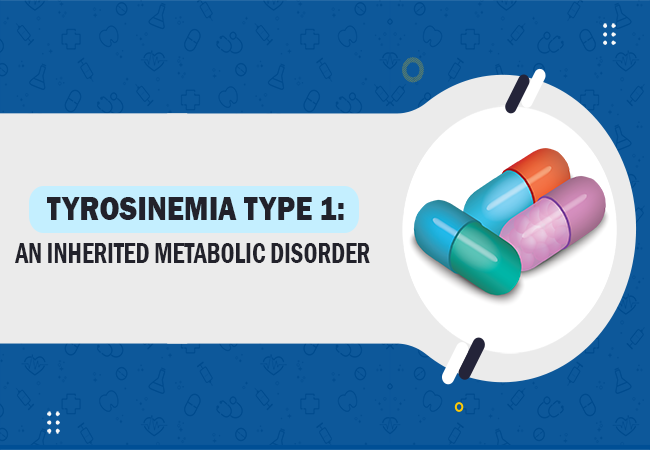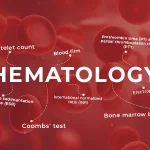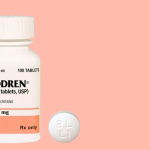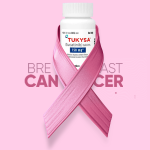Other Name: FAH deficiency; Fumarylacetoacetase deficiency; Hepatorenal tyrosinemia or tyrosinosis; Hereditary tyrosinemia type 1, Tyrosinemia type 1.
What is Tyrosinosis: Tyrosinosis is an extremely rare, possibly heritable disorder of tyrosine metabolism that potentially caused by the defective formation of p-hydroxyphenylpyruvic acid oxidase or of tyrosine transaminase; characterized by the enhanced urinary excretion of p-hydroxyphenylpyruvic acid and of other tyrosyl metabolites upon ingestion of tyrosine or proteins containing that amino acid; of autosomal recessive inheritance.
Type-1 tyrosinemia, also named hepatorenal tyrosinemia or tyrosinosis, is an extremely severe form of tyrosinemia, a buildup of excess amino acid tyrosine in the blood and tissues because of an inability to metabolize it. It is typically caused by a deficiency of fumarylacetoacetate hydrolase enzyme.
Fumarylacetoacetate hydrolase enzyme catalyzes the final step in the degradation of tyrosine -fumarylacetoacetate to fumarate, acetoacetate and succinate. Fumarylacetoacetate accumulates in hepatocytes and proximal renal tubular cells and causes oxidative damage and DNA damage leading to cell death and dysfunctional gene expression which alters the metabolic processes like gluconeogenesis and protein synthesis. The enhancement in fumarylacetoacetate inhibits previous steps in tyrosine degradation leading to an accumulation of tyrosine in the body. Tyrosine is not directly toxic to the kidneys or liver but causes complications related to dermatologic and neurodevelopmental.
Symptoms of Type 1 Tyrosinemia
Type 1 tyrosinemia (HT1) typically presents in infancy as failure to thrive and hepatomegaly. The primary effects are progressive kidney and liver dysfunction. The liver disease causes cirrhosis, hypoglycemia, elevated AFP, conjugated hyperbilirubinemia, and coagulation abnormalities. This can be typically responsible for jaundice, ascites and hemorrhage. There is also an increased probability of HCC or Hepatocellular Carcinoma. The kidney dysfunction presents as Fanconi syndrome: Renal tubular acidosis, aminoaciduria and hypophosphatemia. Cardiomyopathy, dermatologic and neurologic manifestations can also occur. The urine basically has an odor of cabbage or rancid butter.
Standard Therapies for Type 1 Tyrosinemia
In the year of 2017, Nityr (nitisinone pills/tablets) was approved by the U.S. FDA for hereditary tyrosinemia type 1 treatment. Nityr is usually manufactured by Cycle Pharma.
The Food and Drug Administration approved the orphan drug named Orfadin, a capsule and oral suspension form of nitisinone, for treating tyrosinemia type-1 (HT-1) in the year of 2002. Nitisinone was developed by the company Swedish Orphan Biovitrum AB and is marketed by Sobi, Inc.
These medicinal products should only be prescribed by health specialists experienced in treating tyrosinemia type I since the appropriate dose must be adjusted for each and every patient as per the specific biochemical tests and to the weight. Access to a nutritionist skilled in order to manage children with inborn errors of metabolism requiring a low protein diet is an essential part of hereditary tyrosinemia type 1 treatment therapy. Blood tests need to be monitored on a regular basis to maintain the appropriate dose for the patient.
Nitisinone should be used in conjunction with a diet restricted in the amino acids tyrosine and phenylalanine. Therapy with nitisinone and dietary management needs to be started as promptly as possible just after the confirmation of diagnosis.
For over a couple of decades, nitisinone capsules (NTBC) have been successfully considered in order to manipulate tyrosine degradation pathways and save the lives of many children with hereditary tyrosinemia type-1 (HT-1).
Recommended Dose: The recommended starting dosage of Orfadin (nitisinone) is 0.5 mg/kg by mouth twice daily. The dose can be titrated for individual patients, as required depending on biochemical or clinical response. In case the detection of succinylacetone one month after the start of nitisinone therapy, increase the dosage to 0.75 mg per kg twice daily. A maximum dosage of 1 mg per kg orally twice daily may be required depending on the assessment of all biochemical parameters.
Capsules are typically supplied in following dosage strength:
- orfadin 2 mg
- orfadin 5 mg
- orfadin 10 mg
- orfadin 20 mg
In case the biochemical response is satisfactory, dosage needs to be adjusted only as per the body weight gain.
Price & Availability: If you want to buy nitisinone from India then you can contact us via TOLL-FREE Number: 1800-889-1064. At The Indian Pharma, we can help you to get this medicinal product at the lowest possible cost. At The Indian Pharma, you get Genuine Medicines, Timely Delivery and Highest Quality.
The Indian Pharma (TIP) is a leading Supplier, Exporter, Retailer and Wholesaler of generic & branded prescription drugs. At TIP, you can find the best nitisinone price.
Infants with tyrosinemia type-1 (HT-1) are placed on a reduced protein diet that contains limited levels of phenylalanine and tyrosine. A few affected infants have exhibited an enhancement of liver/kidney abnormalities with dietary management solely. Health specialists often recommend that the affected individuals observe a strict diet considering special medical foods throughout their lifetime.
Liver transplantation may be needed for affected infants with already developed end-stage liver failure by the time of diagnosis, have evidence of hepatocellular carcinoma, or can not respond to therapy with nitisinone. In some children, liver transplantation helps improve the function of the kidney.
Genetic counseling is required for affected individuals and their families. Other treatments typically are symptomatic and supportive.
Affected Populations
Tyrosinemia type-1 (HT-1) affects both males and females in equal numbers. The prevalence has been predicted to be 1 in 1 Lakh to 120,000 births globally. In Quebec, Canada, the prevalence of birth is predicted to be 1/16,000. The predicted prevalence in the Saguenay-Lac Saint-Jean region of Quebec is 1 in 1,850 births. In Norway, the prevalence of birth is predicted to be one in 60,000 births.
Prognosis
If not recognized and quickly treated, tyrosinemia type-1 is usually fatal prior to the age of 10 often because of liver or kidney failure, a neurological crisis, or hepatocellular carcinoma (HCC), a kind of liver cancer. Certain children may die within weeks of experiencing the initial signs and symptoms. However, with proper treatment and a managed diet, 90 percent of individuals with the disease will sustain to adulthood and experience fairly normal lives. Nitisinone treatment, in combination with a low-protein diet, allows maximum patients to sustain good health. The prognosis of this disease is dominated by the probability of HCC.






